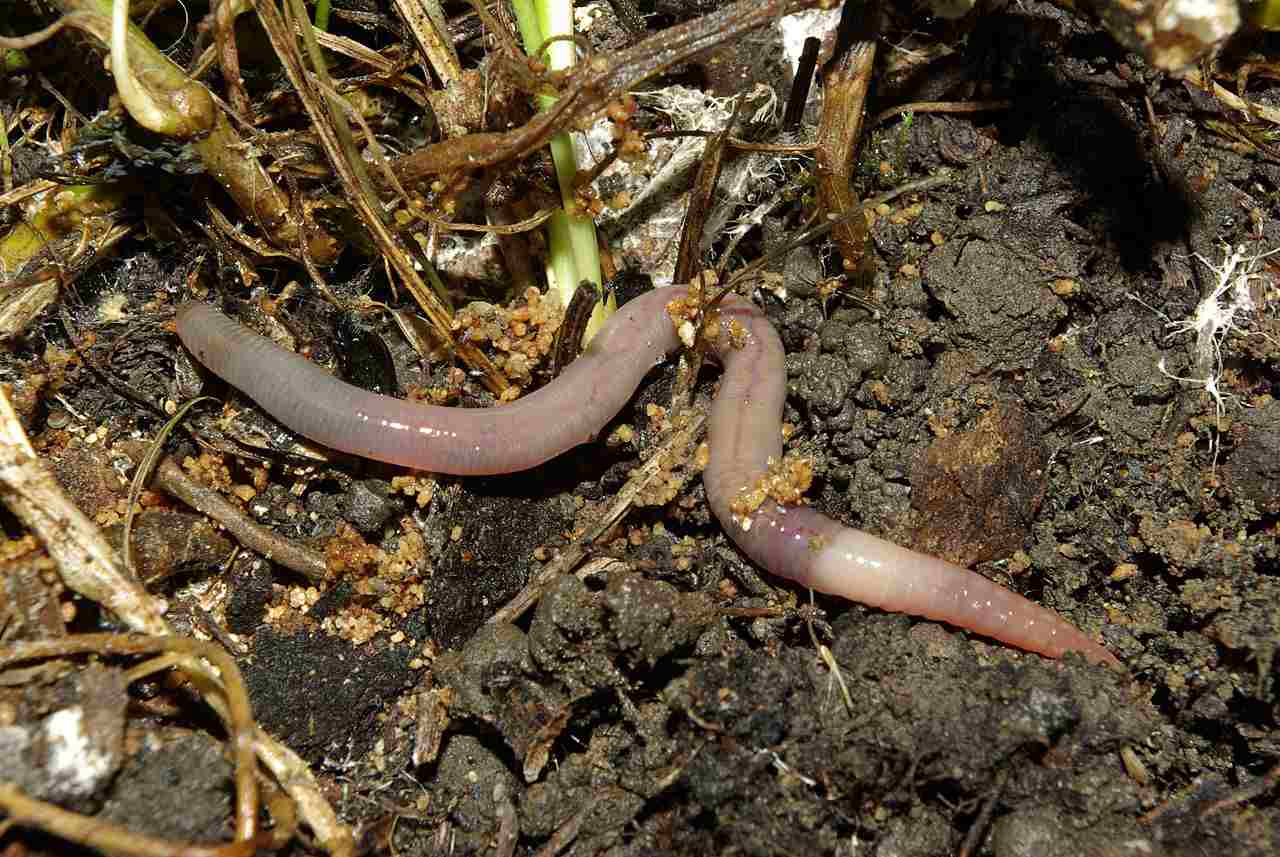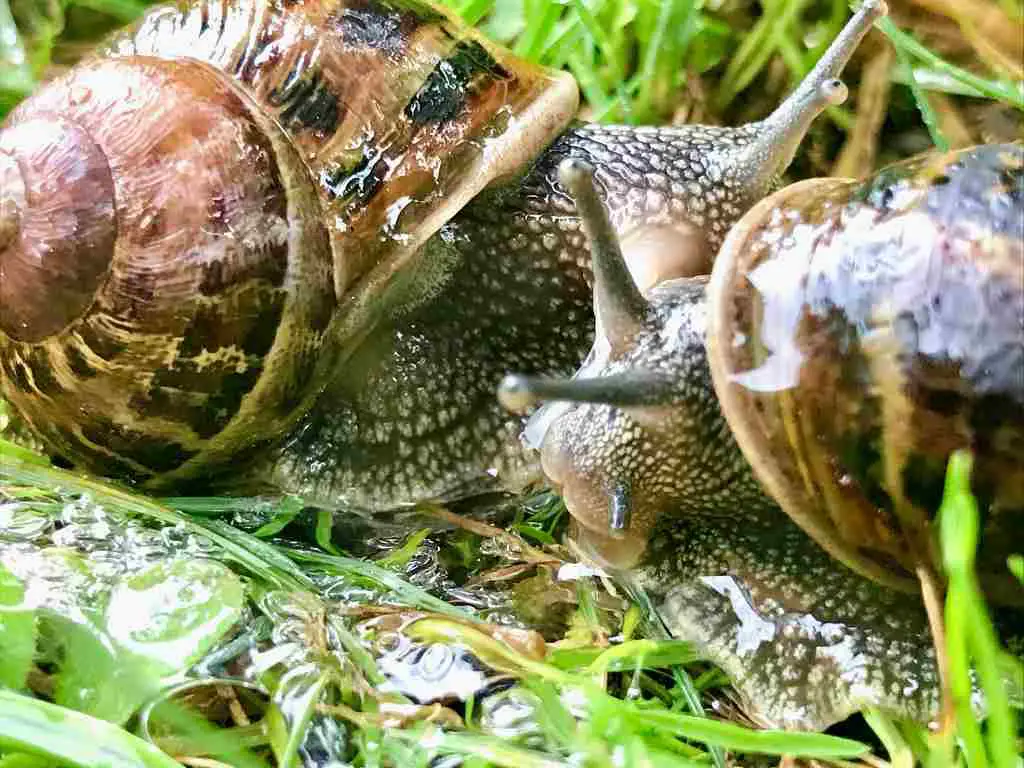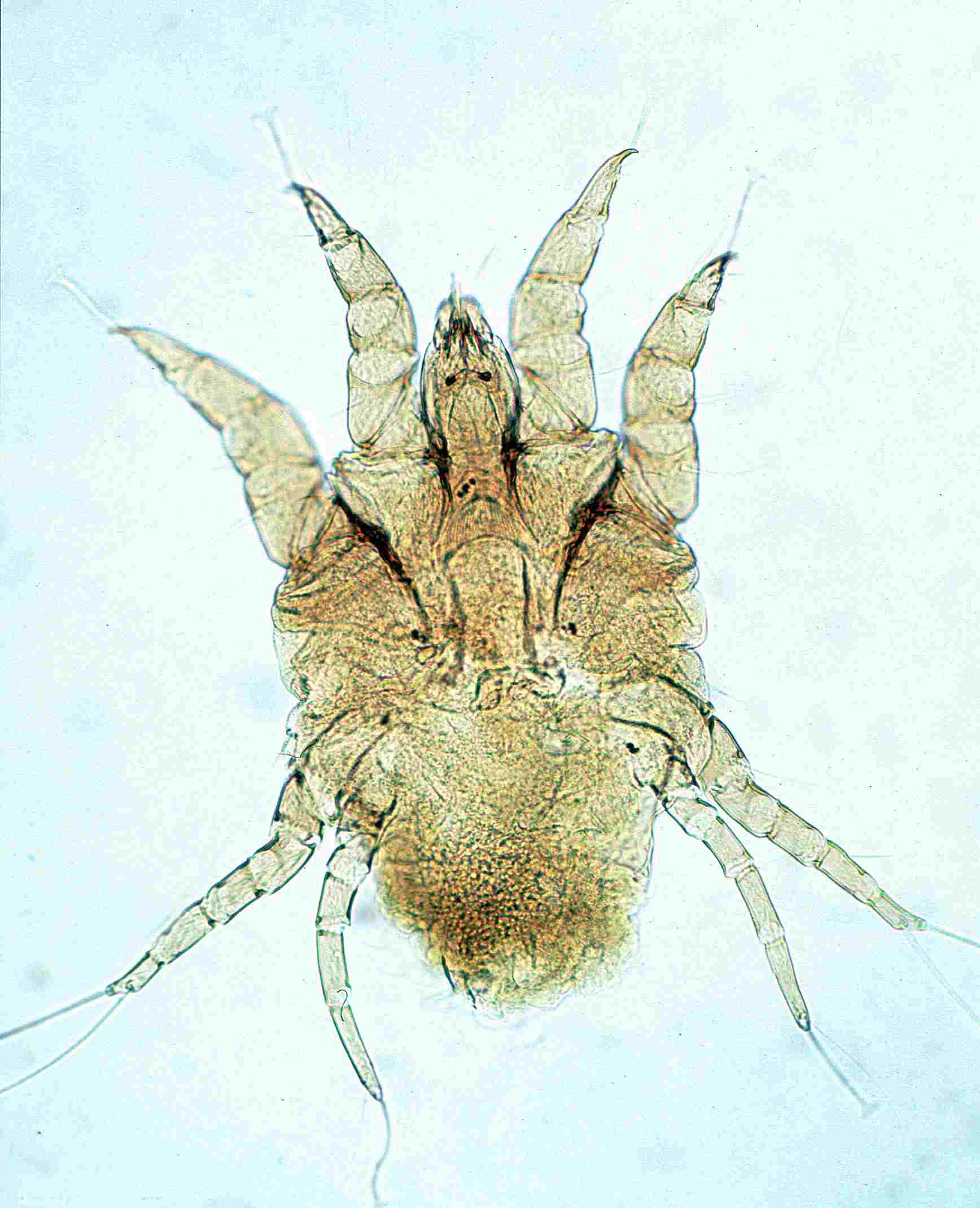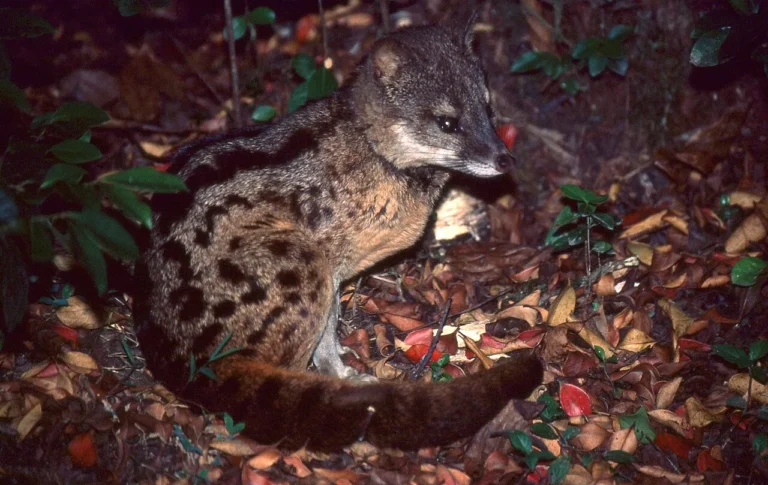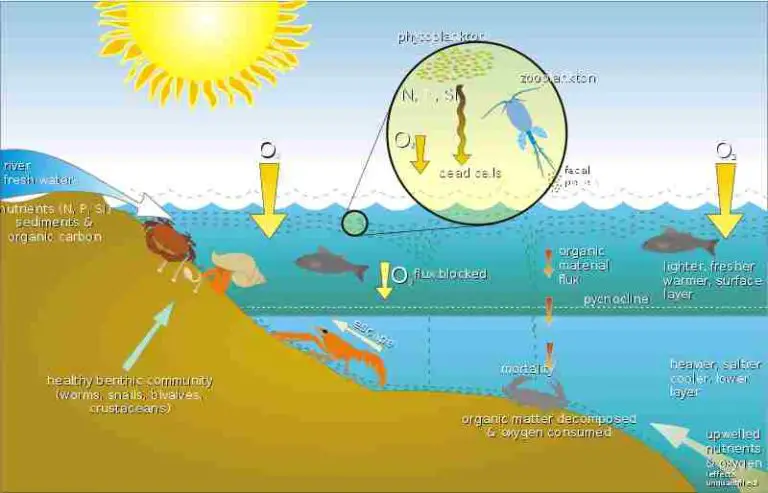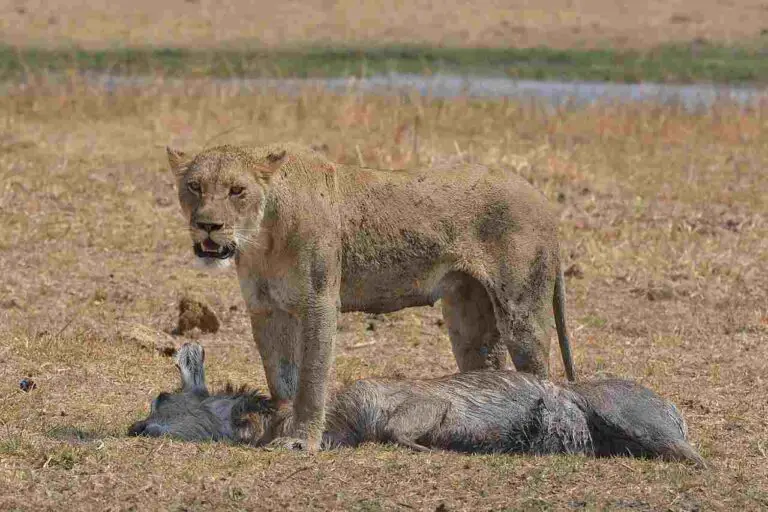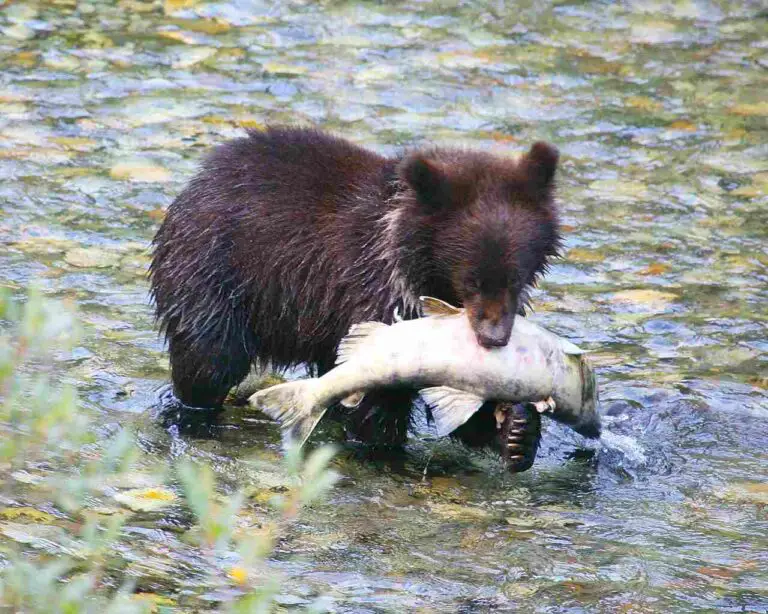15+ Detritivores In The Arctic Tundra Ecosystem
Examples of Detritivores in the Arctic tundra ecosystem are Arctic Annelids, Arctic Bristletails, Arctic Microarthropods, and Arctic Woodlice. These organisms play a crucial role in nutrient cycling by breaking down decaying plant matter and supporting soil health. Additionally, they serve as a food source for various Arctic predators, including birds and small mammals, contributing to the stability and resilience of the Arctic ecosystem.
1. Arctic Springtail (Collembola)
Arctic Springtails, part of the Collembola order, are tiny detritivores playing a vital role in the Arctic tundra ecosystem. These minuscule creatures, often measuring less than 2 millimeters in length, thrive in harsh Arctic conditions, enduring extreme cold and fluctuating temperatures. Their resilience is due to their ability to survive in freezing environments, where they actively contribute to the decomposition of organic matter. By breaking down dead plant material, Arctic Springtails help recycle nutrients in the tundra, providing a foundational service for the entire ecosystem.
The presence of Arctic Springtails indicates a healthy and functioning ecosystem, as they contribute to the breakdown of detritus, aiding in soil formation and nutrient cycling. Their unique morphology, characterized by a distinctive furcula, allows them to “spring” away from predators, showcasing an effective escape mechanism. As they thrive in diverse microhabitats across the Arctic, these tiny but essential organisms support the broader food web, providing sustenance for predators and contributing to the tundra’s biodiversity. Their role in the Arctic ecosystem underscores the importance of maintaining a balanced and thriving environment in extreme climates.
2. Arctic Mite (Acari)
Arctic Mites, from the Acari subclass, are a diverse group of microscopic arachnids that play a key role in the Arctic tundra ecosystem. These mites are incredibly versatile, living in a variety of habitats such as soil, leaf litter, and decaying organic matter. Despite their small size, Arctic Mites are significant decomposers, helping break down organic materials and contributing to the nutrient cycling process. By doing so, they support the formation of healthy soil, fostering a stable environment for plant life and other organisms in the Arctic.
Arctic Mites have adapted to the harsh conditions of the tundra by developing resistance to cold temperatures and rapid climate fluctuations. This adaptability allows them to thrive where other organisms might struggle. Their diet primarily consists of detritus, but some species also consume fungi, bacteria, and other microscopic organisms. Through their feeding habits, Arctic Mites play an integral role in maintaining the ecological balance, supporting both the decomposition process and the broader food web.
3. Arctic Earthworm (Lumbricidae)
Arctic Earthworms, belonging to the Lumbricidae family, are a critical component of the Arctic tundra’s detritus-based ecosystem. These worms contribute to soil health by aerating the soil and decomposing organic matter, which in turn releases essential nutrients. As they burrow through the ground, Arctic Earthworms create channels that enhance soil structure and water infiltration, promoting healthier plant growth. Their activity leads to a more robust and fertile tundra, which is crucial for supporting plant life and, consequently, other forms of Arctic wildlife.
Arctic Earthworms are highly adaptable to cold climates and can survive in frozen soils by burrowing deeper into the ground during the harshest conditions. This adaptation allows them to remain active year-round, although their activity level may vary with the changing seasons. In the warmer months, Arctic Earthworms are more active, contributing significantly to the decomposition process. As a food source for various Arctic predators, such as birds and small mammals, they play a pivotal role in the tundra’s complex food web, highlighting their importance in maintaining the balance of this unique ecosystem.
4. Arctic Slug (Gastropoda)
Arctic Slugs, belonging to the Gastropoda class, are unique in their ability to survive in the extreme conditions of the Arctic tundra. These slugs, like other detritivores, feed on decaying plant matter, playing an important role in breaking down organic material and contributing to the nutrient cycling process. Their presence in the Arctic ecosystem signifies a robust and functioning decomposer community, essential for maintaining soil health and supporting plant life.
Arctic Slugs have adapted to cold climates by developing thicker body coverings and a slow metabolic rate, allowing them to endure the tundra’s harsh conditions. They are most active during the brief Arctic summer, when they contribute significantly to the decomposition process. Although they may not seem as conspicuous as other Arctic fauna, Arctic Slugs serve as a food source for various birds and small mammals, making them a crucial link in the tundra’s food chain. By fulfilling their role as decomposers and prey, Arctic Slugs support the stability and resilience of the Arctic tundra ecosystem.
5. Arctic Beetle Larvae (Coleoptera)
Arctic Beetle Larvae, from the Coleoptera order, are an essential component of the Arctic tundra’s detritivorous community. These larvae come from various beetle families and play a significant role in decomposing organic material, contributing to nutrient cycling in the tundra. They feed on decaying plant matter, helping to break down complex organic compounds into simpler forms that can be absorbed by plants and other organisms. This decomposition process is vital for maintaining soil health and supporting the overall productivity of the Arctic ecosystem.
Arctic Beetle Larvae are highly adaptable to extreme cold and have evolved to withstand the short growing seasons and freezing temperatures characteristic of the Arctic tundra. They typically reside in soil or beneath decomposing vegetation, where they can access a constant supply of detritus. The activity of Arctic Beetle Larvae not only supports the decomposition process but also provides a crucial food source for a variety of predators, including birds and small mammals. This interconnectedness underscores the larvae’s importance in the broader Arctic food web, highlighting their role in maintaining ecosystem stability.
6. Arctic Millipede (Diplopoda)
Arctic Millipedes, belonging to the Diplopoda class, are a key group of detritivores in the Arctic tundra ecosystem. These multi-legged creatures contribute to the decomposition of organic material, breaking down dead plant matter and facilitating nutrient cycling. Their feeding activity helps convert complex organic compounds into simpler nutrients that enrich the soil and support plant growth. In turn, this nutrient cycling fosters a healthy ecosystem, providing a stable environment for other Arctic organisms.
Despite their preference for warmer, more humid conditions, Arctic Millipedes have evolved to survive in the tundra’s harsh climate. They often reside in areas with ample organic matter, such as under rocks, logs, or within the soil. These millipedes are most active during the warmer summer months, contributing to the rapid decomposition process that occurs during the short Arctic growing season. As decomposers, Arctic Millipedes play a critical role in maintaining soil structure and promoting plant health, while also serving as a food source for birds and other predators within the tundra ecosystem.
7. Arctic Crane Fly Larvae (Tipulidae)
Arctic Crane Fly Larvae, part of the Tipulidae family, are a crucial group of detritivores in the Arctic tundra. These larvae feed on decaying organic matter, playing a vital role in the decomposition process and contributing to nutrient cycling in the tundra ecosystem. By consuming detritus, Arctic Crane Fly Larvae help break down complex organic material into simpler forms, which are then available to support plant growth and soil health. This activity is especially important in the Arctic tundra, where nutrient cycling is essential for maintaining a balanced ecosystem.
The adaptability of Arctic Crane Fly Larvae allows them to survive in the tundra’s extreme conditions. They are typically found in moist soil or near decaying vegetation, where they can access a steady supply of organic material. These larvae are an essential food source for various Arctic predators, including birds and small mammals, making them a key component of the food web. The role of Arctic Crane Fly Larvae in the decomposition process and their importance in the food chain underline their contribution to the stability and resilience of the Arctic tundra ecosystem.
8. Arctic Moth Larvae (Lepidoptera)
Arctic Moth Larvae, from the Lepidoptera order, are an integral part of the detritivorous community in the Arctic tundra. These larvae, commonly known as caterpillars, feed on a variety of organic materials, including dead plant matter and decaying vegetation. Their feeding activity contributes to the decomposition process, facilitating nutrient cycling in the tundra ecosystem. This process is crucial for maintaining soil health and providing the necessary nutrients for plant growth, which in turn supports the broader Arctic food web.
Arctic Moth Larvae have adapted to the tundra’s harsh conditions by developing resistance to cold and an ability to endure the short growing season. They are often found in sheltered areas, such as under rocks or within the soil, where they can avoid extreme weather conditions. These larvae are an essential food source for a variety of predators, including birds and small mammals, underscoring their importance in the tundra’s food chain. By contributing to the decomposition process and serving as prey, Arctic Moth Larvae play a vital role in maintaining the ecological balance of the Arctic tundra.
9. Arctic Moss Mite (Oribatida)
Arctic Moss Mites, part of the Oribatida order, are a specialized group of detritivores in the Arctic tundra. These tiny arachnids primarily feed on moss and decaying organic material, playing an important role in the decomposition process and nutrient cycling. Their feeding activity helps break down dead plant matter, releasing nutrients that are vital for the health of the tundra ecosystem. This process is particularly important in the Arctic, where organic matter accumulates slowly due to the harsh climate and short growing seasons.
Arctic Moss Mites are highly adapted to the tundra’s extreme conditions, with a robust exoskeleton that provides protection against cold temperatures and environmental stresses. They are often found in association with mossy environments, where they can access a steady supply of organic material. These mites also contribute to soil formation and structure, as their activities mix and aerate the soil. In addition to their role in decomposition, Arctic Moss Mites serve as a food source for various predators, including birds and small mammals, reinforcing their importance in the Arctic tundra’s food web.
10. Arctic Fungus Gnat Larvae (Mycetophilidae)
Arctic Fungus Gnat Larvae, part of the Mycetophilidae family, are significant detritivores in the Arctic tundra ecosystem. These larvae primarily feed on fungi and decaying organic matter, contributing to the decomposition process and aiding in nutrient cycling. As they consume fungi, they help maintain a balance in the fungal community, preventing the overgrowth of certain species and supporting a diverse ecosystem. The presence of Arctic Fungus Gnat Larvae indicates a healthy and functioning decomposer community, which is crucial for the tundra’s overall ecological stability.
These larvae are well-adapted to the extreme conditions of the Arctic, with the ability to survive in cold and damp environments where fungi thrive. They are often found in soil or decaying wood, where they can access a steady supply of organic matter. The activities of Arctic Fungus Gnat Larvae not only contribute to decomposition but also provide a critical food source for a variety of Arctic predators, such as birds and small mammals. By playing a role in nutrient cycling and supporting the food web, Arctic Fungus Gnat Larvae contribute significantly to the resilience and sustainability of the Arctic tundra ecosystem.
11. Arctic Enchytraeid Worm (Enchytraeidae)
Arctic Enchytraeid Worms, part of the Enchytraeidae family, are small annelid worms that play a crucial role in the Arctic tundra’s decomposition process. These worms primarily feed on decaying organic matter, breaking down dead plant material and contributing to nutrient cycling. By doing so, they help maintain soil health and support plant growth, which in turn sustains the broader Arctic ecosystem. Their activities in decomposing detritus are particularly important in the Arctic, where organic matter decomposition can be slow due to cold temperatures and short growing seasons.
These worms are highly adaptable to the harsh Arctic climate, able to survive in frozen soils and thrive during the brief summer season. They are often found in soil and beneath decaying vegetation, where they can access a steady supply of organic material. Arctic Enchytraeid Worms also play a role in soil aeration and structure, as their burrowing activities create channels that improve water infiltration. Additionally, these worms are an important food source for various Arctic predators, including birds and small mammals, highlighting their role in supporting the tundra’s food web and maintaining the ecosystem’s balance.
12. Arctic Isopod (Isopoda)
Arctic Isopods, belonging to the Isopoda order, are a fascinating group of detritivores that contribute significantly to the Arctic tundra ecosystem. These small crustaceans are known for their segmented bodies and flattened shape, allowing them to navigate through decaying organic matter with ease. As detritivores, Arctic Isopods play a crucial role in breaking down dead plant material and aiding in nutrient cycling, supporting soil health and plant growth in the tundra. Their presence is a key indicator of a functioning decomposer community, which is vital for the overall stability of the Arctic ecosystem.
Arctic Isopods are well-suited to the extreme conditions of the tundra, with adaptations that allow them to survive in cold climates. They are commonly found in moist environments, such as beneath rocks, logs, and within soil, where they can access a steady supply of detritus. Their feeding activity not only supports the decomposition process but also provides an essential food source for various Arctic predators, including birds and small mammals. This role in both the decomposer community and the food web underscores the importance of Arctic Isopods in maintaining the ecological balance of the Arctic tundra.
13. Arctic Annelid (Annelida)
Arctic Annelids, part of the Annelida phylum, are segmented worms that play a critical role in the Arctic tundra’s detritivorous community. These worms primarily feed on decaying organic matter, contributing to the decomposition process and aiding in nutrient cycling. By breaking down detritus, Arctic Annelids help maintain soil health and promote plant growth, which in turn sustains the broader Arctic ecosystem. Their role in nutrient cycling is crucial, especially in an environment where decomposition rates can be slow due to extreme cold and limited growing seasons.
These annelids are highly adaptable to the Arctic’s harsh conditions, with the ability to survive in frozen soils and thrive during the brief summer season. They are often found in soil or beneath decaying vegetation, where they can access a steady supply of organic matter. As they burrow through the soil, Arctic Annelids also contribute to soil aeration and structure, which supports water infiltration and plant root growth. Additionally, they serve as a food source for various Arctic predators, including birds and small mammals, highlighting their importance in the tundra’s food web.
14. Arctic Bristletail (Archaeognatha)
Arctic Bristletails, from the Archaeognatha order, are unique detritivores in the Arctic tundra ecosystem. These primitive insects are characterized by their elongated bodies and three tail-like appendages, which help them maneuver through the environment. They primarily feed on decaying plant matter and other organic materials, playing a significant role in the decomposition process and nutrient cycling in the tundra. By consuming detritus, Arctic Bristletails help break down organic material, releasing nutrients that support plant growth and soil health.
Arctic Bristletails are well-adapted to the tundra’s extreme conditions, with a robust exoskeleton that provides protection against cold temperatures and environmental stresses. They are often found in moist environments, such as under rocks or within leaf litter, where they can avoid extreme weather conditions. As decomposers, Arctic Bristletails contribute to the overall health of the ecosystem, while also serving as a food source for various Arctic predators, including birds and small mammals. Their role in both decomposition and the food web underscores their importance in maintaining the ecological balance of the Arctic tundra.
15. Arctic Microarthropod (Microarthropoda)
Arctic Microarthropods, a diverse group within the Microarthropoda class, play a critical role in the Arctic tundra’s decomposition process. These tiny arthropods, which include mites, springtails, and others, feed on decaying organic matter, aiding in nutrient cycling and soil health. Their small size allows them to inhabit a variety of microhabitats within the tundra, from soil to leaf litter to decaying plant material. By breaking down detritus, Arctic Microarthropods contribute to the nutrient cycling process that supports plant growth and the broader tundra ecosystem.
Despite their size, Arctic Microarthropods are highly adaptable to the tundra’s harsh climate. They often have specialized adaptations to survive in freezing conditions, such as antifreeze proteins or rapid reproduction during warmer months. These arthropods play a crucial role in the food web, serving as a primary food source for many Arctic predators, including birds, small mammals, and other insects. Their role in decomposition and the food web highlights their significance in maintaining the ecological balance of the Arctic tundra.
16. Arctic Woodlouse (Armadillidiidae)
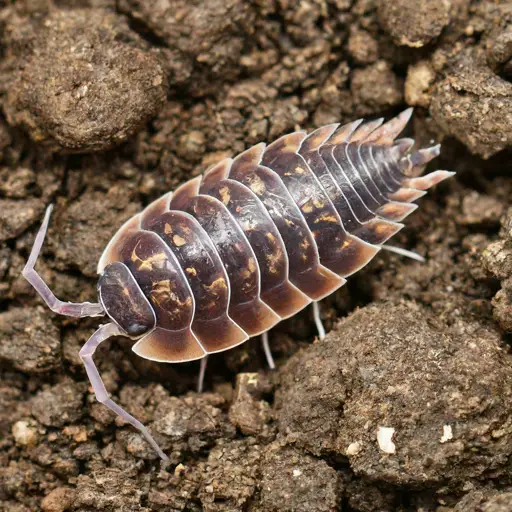
Arctic Woodlice, part of the Armadillidiidae family, are small crustaceans that contribute significantly to the Arctic tundra’s decomposition process. These detritivores primarily feed on decaying plant matter and other organic materials, helping to break down detritus and support nutrient cycling. Arctic Woodlice are often found in moist environments, such as beneath rocks, logs, or within soil, where they can access a steady supply of organic matter. Their feeding activity helps maintain soil health and promotes plant growth, which in turn sustains the broader tundra ecosystem.
Arctic Woodlice are well-suited to the harsh conditions of the Arctic tundra, with a robust exoskeleton and the ability to curl into a ball for protection against predators and extreme weather. They play a key role in the decomposition process, contributing to nutrient cycling and soil structure. Additionally, Arctic Woodlice serve as a food source for various Arctic predators, including birds and small mammals, making them an important part of the food web. Their role in supporting both decomposition and the food chain highlights their importance in maintaining the ecological balance of the Arctic tundra.
*Summary
-
Arctic Annelid: Segmented worms; detritivores; contribute to soil health and nutrient cycling; aerate soil; food source for birds and small mammals.
-
Arctic Bristletail: Primitive insects with elongated bodies; detritivores; break down decaying plant matter; serve as food for birds and small mammals.
-
Arctic Microarthropod: Tiny arthropods, including mites and springtails; detritivores; support nutrient cycling; significant in the food web; adapt to harsh climates.
-
Arctic Woodlouse: Small crustaceans; feed on decaying plant matter; support nutrient cycling; robust exoskeleton; serve as food for birds and small mammals.
| Group |
Role/Characteristics
|
| Arctic Annelid |
Segmented worms; contribute to soil health and nutrient cycling; aerate soil; food source for birds and small mammals
|
| Arctic Bristletail |
Primitive insects; feed on decaying plant matter; food source for birds and small mammals
|
| Arctic Microarthropod |
Tiny arthropods; detritivores; support nutrient cycling; significant in the food web; adapt to harsh climates
|
| Arctic Woodlouse |
Small crustaceans; detritivores; support nutrient cycling; serve as food for birds and small mammals
|

